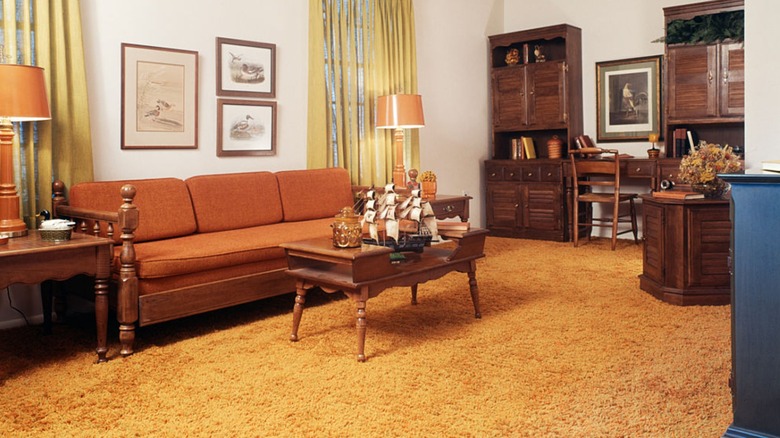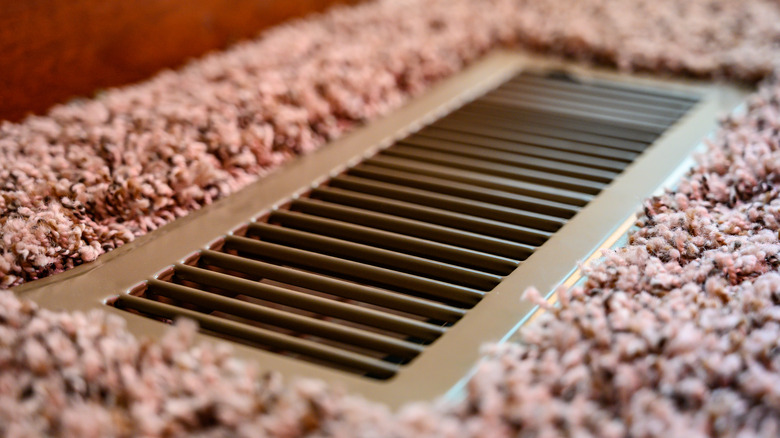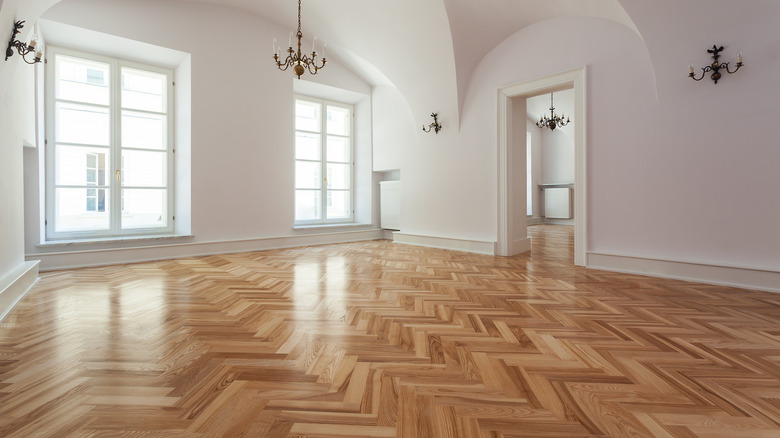The Best Location To Check For Beautiful Hardwood Floors Under Your Dated Carpet
Sometimes when you move into a home, there are hidden gems waiting to be discovered. One such gem is finding hardwood floors underneath your outdated carpet. The good news is that you don't need to rip up an entire carpet and risk ruining a room to find out if there is wood beneath. To see what's hiding underneath the dated layer, simply lift up a floor vent. By doing this, you'll easily be able to peek under the carpet's edges to see if there is wood underneath the layers of carpet and padding. This will then give you a better idea of whether you should rip up the rest of the carpet or keep the room as-is.
In general, wood flooring can be expensive, as the average cost to install hardwood floors in 2023 was $4,200. However, prices could be even higher than that depending on factors like the type of hardwood floor used and the size of the space. Because of this, finding a wood floor beneath your carpeting could save you a lot of money, not to mention time and effort as well.
Pry up a floor vent to check for hardwood floors
Hidden hardwood can be found in any room in your home, though it's more likely that areas like your living room will feature it. When you lift the floor vent, ensure you do it slowly so you don't damage it. The floor underneath should be relatively easy to see. Most vents are freestanding and not secured to the floor, but if yours is, ensure you are careful when prying it off to prevent damage both to the vent and your floor. Once the vent is up, there could be several layers of floor visible. For example, you may see carpet, padding, wood, and subflooring. Take a good look so you don't miss out on a layer of wood that's submerged between the others.
You'll also need to check the floor vents in each room. Your living room could have hidden wood flooring, but not your bedroom or entryway. Further, you're more likely to discover wood floors covered by carpet in older homes. This is because carpet was considered to be the go-to flooring choice from the 1960s through the 1980s, propelling many homeowners to cover original wood flooring. If you have a newer home, your chances of finding hardwood under carpet are slim, though you may still want to check for good measure.
The job isn't done even if you do see a wooden floor
As with any hack, there is a caveat to this one — not all wooden floors are hardwood. Initial delight at finding wood may turn into sadness once you strip the whole carpet back and realize it's engineered wood instead. One of the easiest ways to check if wood is hardwood is the look and design. You may need to peel up a bit more carpet to check this, so try and do it in an area that isn't as visible like a corner of the room. Laminate will have a straightforward pattern because it uses a photograph of wood to mimic the look of the real thing, whereas real hardwood has natural discrepancies in design and color. However, finding laminate is unlikely in older homes, since it didn't become popular in America until the 1990s.
If not laminate, a wood floor could also be made out of engineered hardwood, which became popular in the 1960s and has a real wood top layer but is bonded to plywood. It's more difficult to tell the difference between engineered wood and hardwood, but hardwood usually has extremely-close seams between the boards. If the floor does turn out to be real hardwood, keep in mind that it will probably have deteriorated over time due to a lack of maintenance. However, hardwood floors can look brand new through processes like cleaning, resealing, and varnishing.


